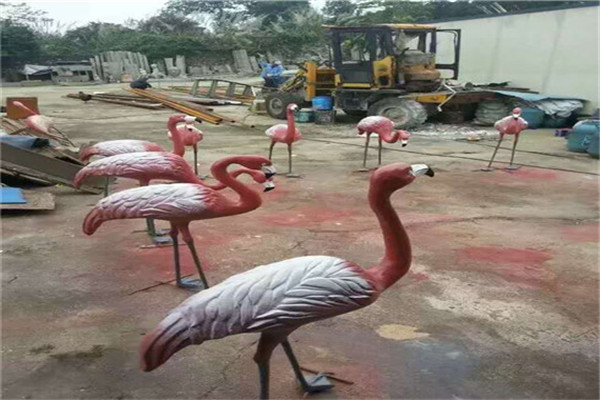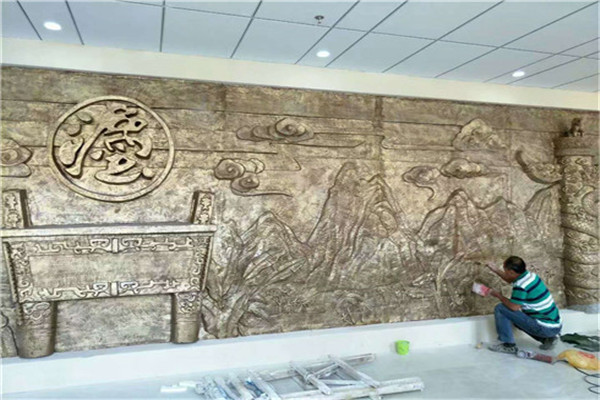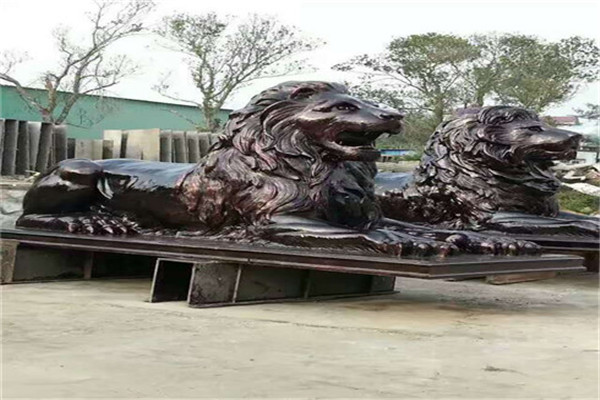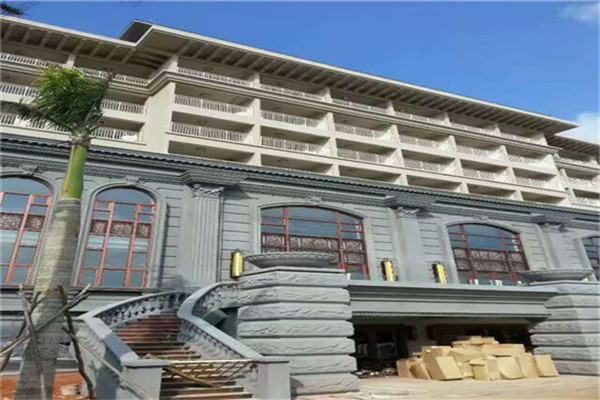
The art of carving various patterns and images on stones, usually also refers to sculpture handicrafts carved from stones. Chinese stone carving can be divided into bluestone carving, marble carving, white marble carving, talc carving, black crystal carving, colored stone carving, pebble carving, etc. Hui'an, Fujian, is famous for its bluestone carvings for architectural decoration and stone lions, among which the mouth of the stone lion contains stone beads that roll freely, and is famous in Southeast Asia. The marble carving in Yunnan is made from the marble of Diancang Mountain. Its patterns are like colored mountains and rivers, or dangerous peaks and valleys, or waterfalls follow the clouds. The inlaid furniture is unique. White marble carvings in Quyang, Hebei, Fangshan, Beijing and other places were mainly used for palace architectural decoration in the Ming and Qing dynasties, such as Huabiao, stone lions, railings, etc; Modern times are used for decoration of public and memorial buildings, such as the Great Hall of the People, the Monument to the People's Heroes, Chairman Mao's Memorial Hall, etc. Talc carvings in Haicheng, Liaoning Province and Laizhou, Shandong Province use small and cute animals as traditional varieties. The carvings of black crystal stone in Dongkou, Hunan and Lichuan, Hubei are dark and bright. Caishi carving is mainly produced in Qingtian, Zhejiang, Shoushan, Fuzhou, and Liuyang, Hunan. Pebble carvings are mainly produced in Lanzhou, Shenyang and other places. Stone carving techniques include intaglio (contour carving), shadow carving, relief, round carving (complete three-dimensional carving without any background), and openwork (also known as openwork). Shadow carving is a unique technique of Fujian Hui'an bluestone carving. It uses steel drills of different sizes to chisel on the bluestone, and uses the size, depth and density of the drill points to express the images of landscapes, birds, animals, people, flowers, etc.

Lacquer carving is a traditional handicraft in China, also called red carving. Its technique began in the Tang Dynasty, and its process is extremely complex. Paint, tire The process of polishing and polishing is complicated and takes a long time, so large lacquer carvings are also extremely expensive and have always been the furnishings of royal families and nobles in ancient times. Lacquer carving is a technique to carve patterns on stacked flat lacquer bodies. It was introduced into Beijing during the Yuan and Ming Dynasties. Through the painstaking research of lacquer carving artists, the lacquer carving technique has gradually become perfect and mature, and lacquerware has become a handicraft with Beijing characteristics. Beijing lacquer carving is as famous as Hunan Hunan embroidery and Jiangxi Jingdezhen porcelain. It has been known as the "Three Masters of Chinese Arts and Crafts". For many years, lacquer carving has been favored by lacquer carving art lovers at home and abroad for its unique craft, exquisite and beautiful shape without losing a sense of solemnity.

Bonsai sculpture is an ingenious combination of plant cultivation technology and garden art. It is an organic unity of landscape, basin and several frames. It is mainly composed of trees and shrubs, with rocks, people, buildings, etc. as the background, to show the beautiful scenery of giant trees in the wilderness, lush forests or ancient trees with thousands of years. There are evergreen pines and cypresses, such as five needle pine, black pine, larch, juniper, etc; Flowers and fruits include camellia, brome, June snow, longevity peach, fire thorn, pomegranate, etc; Miscellaneous trees include broad-leaved trees, shrubs such as elm, skeleton, etc. The miniature bonsai, which is the size of a wine cup, is planted in a basin with a wild state, exquisite and attractive plant shape. The cursive potted landscape refers to the shape of plants into a certain word, commonly used as elm with golden leaves, rose vine, etc. The chrysanthemum potted landscape is to use the small chrysanthemums grafted on Artemisia annua to twist the artemisia stem and form a vigorous tree trunk by manual traction; Modern green sculpture three-dimensional sculpture, also known as "three-dimensional painting", can enjoy different scenery from different angles and positions. There are combinations of rattan plants and buildings, such as green bridge columns, colorful landscape walls, etc. There are sculptures of grass and flowers, such as the charmingly naive giant panda, the beautiful peacock, the elephant with a long nose, the giraffe with a raised neck, flocks of cattle and sheep, monkeys playing on horseback, etc

The handicrafts made by forging copper are lifelike in shape, easy to sculpt, and the lines of the handicrafts are very smooth. Even if you look carefully, you will not find any shortcomings. Of course, you need to ensure the craftsmanship of the sculptors. Only the craftsmanship can ensure the shape image of the forged copper sculpture handicrafts. In the process of production, brass or copper plate is usually used as the base, and then forging is carried out, and multiple forged copper plates are used to show the overall image of the handicraft. For many sculpture artists, corresponding copper plates are selected for forging. The forging copper processing technique is unique. Attention should be paid to heating the copper plate, then forging, after a certain forging, polishing and polishing to make the surface smooth, so as to become the desired forging copper sculpture handicrafts, which are all hand-made, very public welfare, natural and vivid in appearance. Attention should be paid to the handicrafts produced, Certain maintenance is required to ensure its appearance is not affected.

1. Traditional green sculpture shaping: directly pruning the plants with garden art. There are simple geometric shaping (such as sphere, cube, pyramid, cylinder), complex geometric shaping (layered shaping, spiral shaping, etc.), animal shaping and various peculiar shaping (automobile shaping, aircraft shaping, abstract and free shaping, etc.). Hunan EPS line Common plants include pine and cypress, privet, boxwood, national locust, elm, etc. 2. Grafting: taking a certain plant as the rootstock, grafting plants with different impressions on it, and then making artistic processing of its shapes, such as polychrome chrysanthemum bonsai, polychrome rose bonsai, polychrome peach, polychrome plum, polychrome crabapple, etc. Such as cliff chrysanthemum, tower chrysanthemum, animal shaped chrysanthemum, etc. 2.1 Single plant green sculpture refers to the sculpture formed entirely by one plant or one plant with multiple colors or by grafting multi-color plants. The sculpture has a long viewing period and simple operation. For example, tree sculptures can be kept for a long time only by special pruning, without considering flower changing and water spraying, and the maintenance management is simple. 2.2 Double plant green sculpture refers to the sculpture shaped by two different kinds of plants. The sculpture has a long viewing period and a strong three-dimensional sense, and usually uses the complementary and mutually reinforcing advantages of two plants for modeling. Such as evergreen and deciduous plants, broad-leaved and coniferous plants, lianas and herbs, as well as different colors, species, branches and leaves, such as leaf color, flowers and fruits, branches and stems. 2.3 Mixed plant green sculpture refers to sculpture with three or more kinds of plants. EPS line Price The sculpture has a short viewing period and complicated operation, but it is highly ornamental and lifelike. The common ones are large three-dimensional sculptures, some animal shaped sculptures elaborately composed of flowers, leaves and fruits of different plants according to design requirements, such as peacock, red crowned crane, panda, etc; Or symbolic sculptures with certain cultural connotation and city image, such as idiom allusion sculptures (learning to walk in Handan, dancing at the smell of chickens), Olympic seal, football World Cup, etc.

Artificial landscape rockery is a kind of mountain built with soil, stone and other materials for the purpose of landscaping in gardens. The rockery has various landscaping functions, such as forming the main landscape or terrain skeleton of the garden, dividing and organizing the garden space, arranging the courtyard, revetment, slope protection, retaining soil, and setting natural flower beds. It can also be combined with garden buildings, garden roads, sites and garden plants to form a scene full of changes, so as to reduce the artificial atmosphere, add natural interest, and integrate garden buildings into the landscape environment. Therefore, rockery has become one of the characteristics of Chinese natural landscape garden. The natural landscape is the artistic source and basis of rockery creation. Although the real mountain is good, it is rare to visit it often. The front rockery is arranged near the house. As a work of art, it is more general and refined than the real mountain. It can embody people's thoughts and feelings, and make it have the charm of "mountains are beautiful, rocks are beautiful". Artificial rockery must also try not to reveal artificial traces, making it difficult to distinguish the true from the false. The rockery, which comes down in one continuous line with the traditional Chinese landscape painting, is important because it seems true but not true. Although it is false, it is still true, which is thought-provoking.






